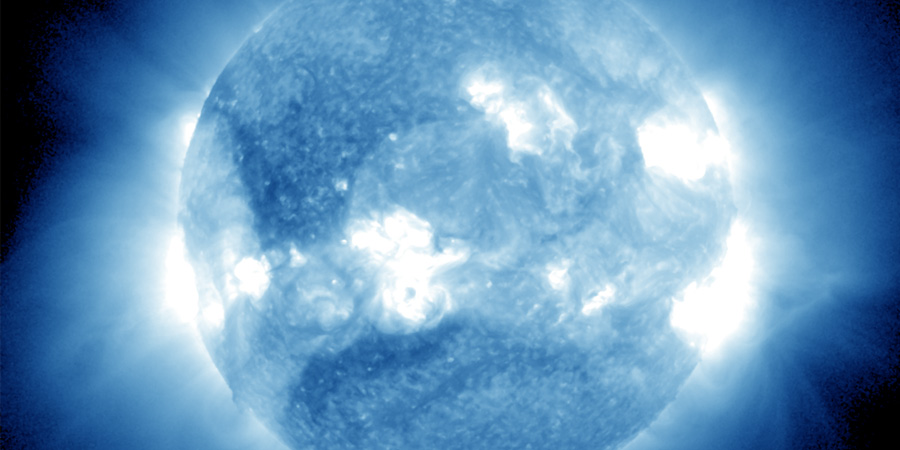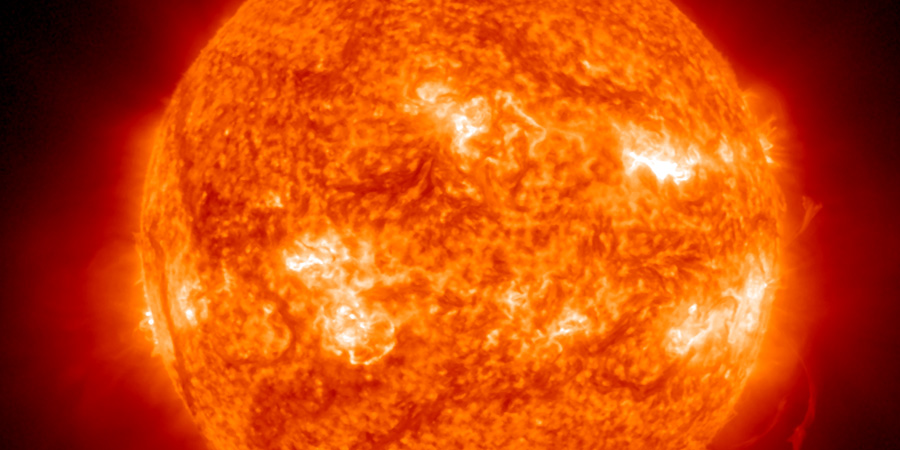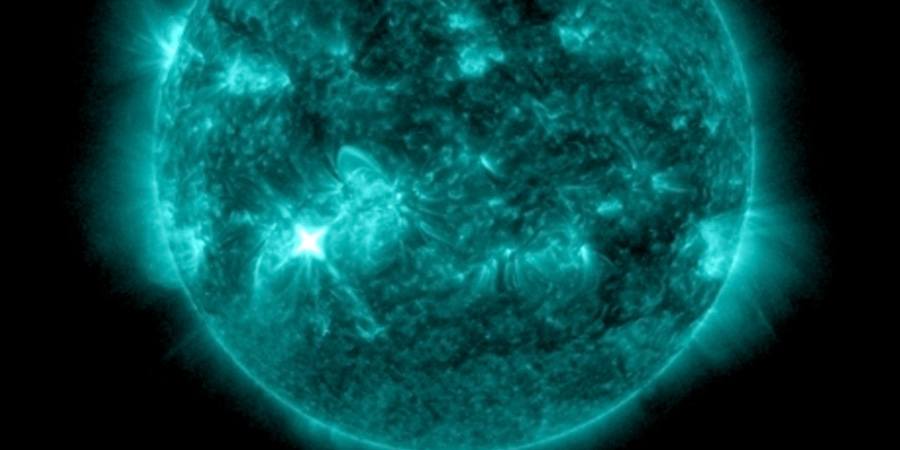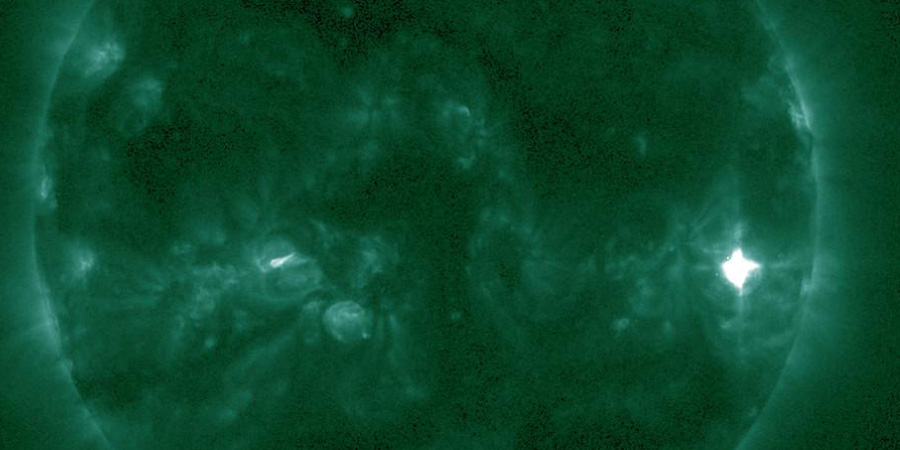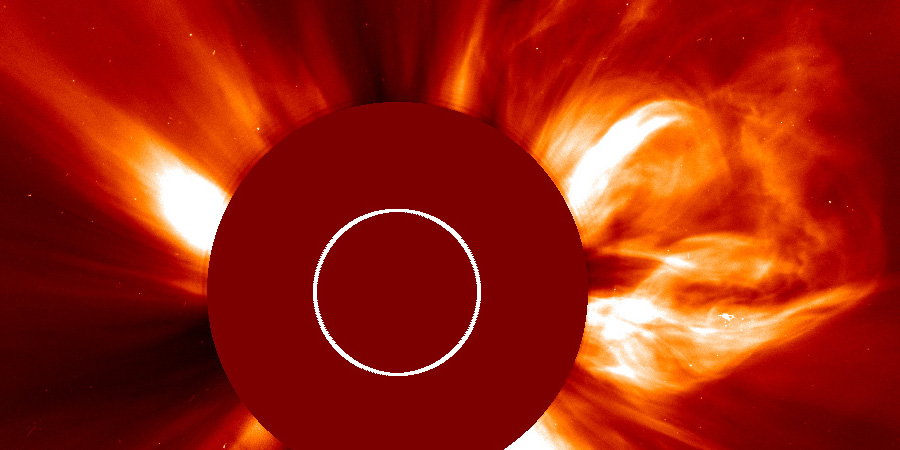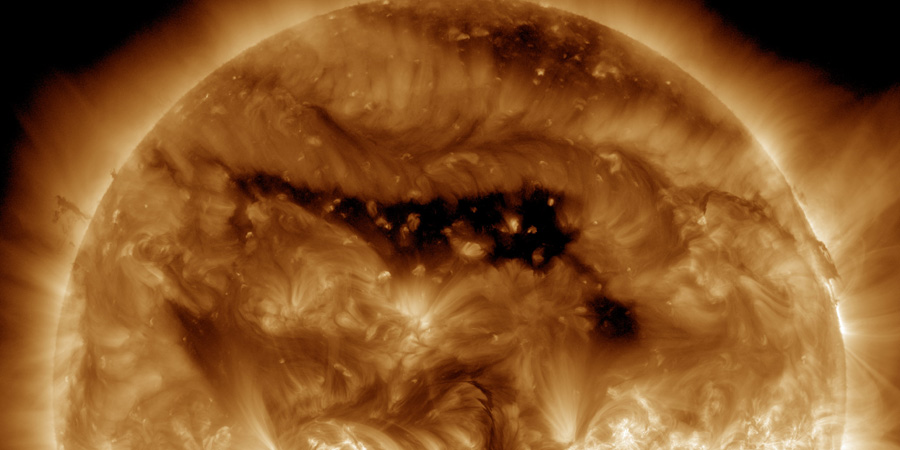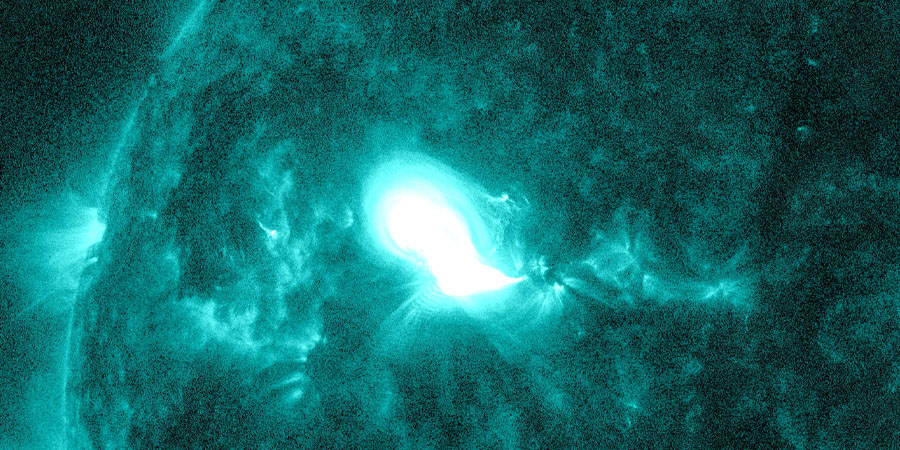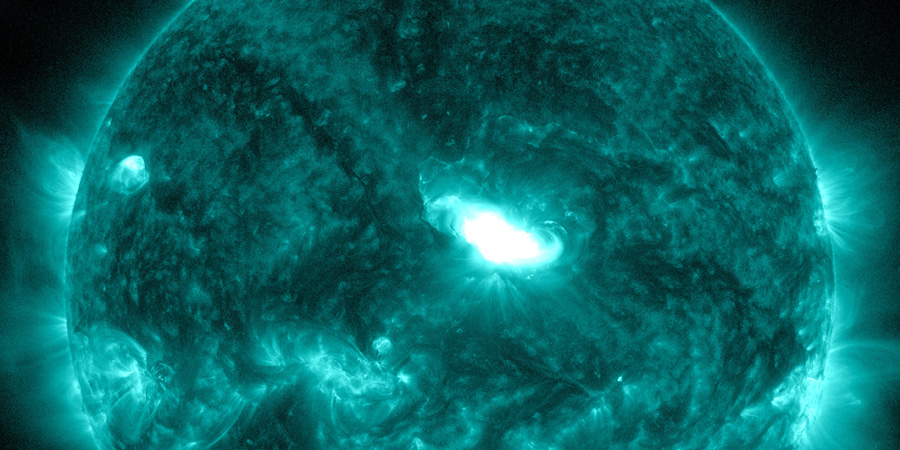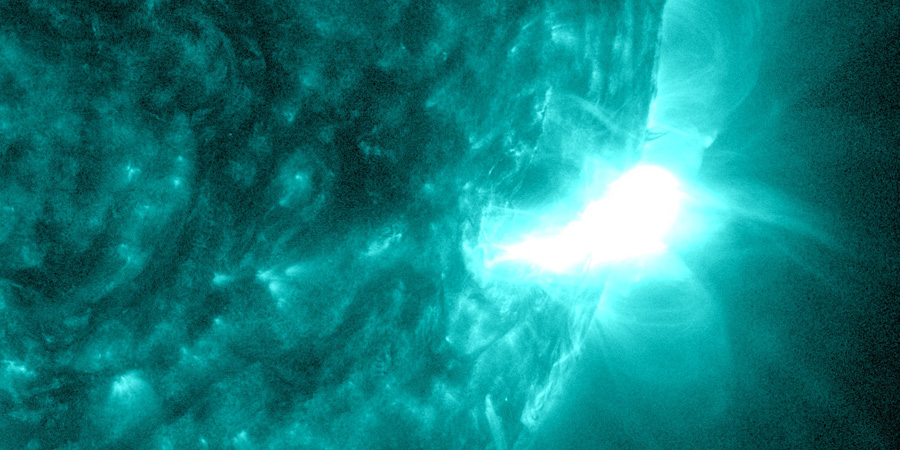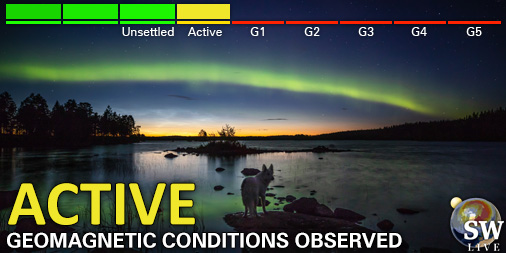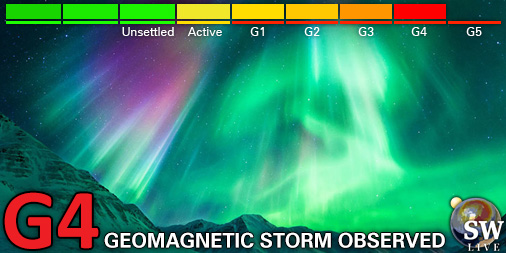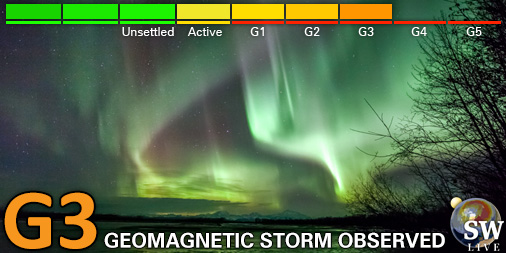Latest news updates Subscribe
Two earth-directed coronal mass ejections
lunedì, d.C. dicembre PM 19:31 UTC
Our Sun remains fairly active today but no coronal mass ejections were launched today with a clear earth-directed component. We do however want to talk about yesterday's events again as more data and opinions have emerged...
Strong G3 geoamagnetic storm watch issued
domenica, d.C. dicembre PM 23:09 UTC
It has been quite an eventful day on the Sun with 18 M-class solar flares and even an X1 solar flare. Sunspot region 3936 produced most of these events including the X-flare but also sunspot region 3938, 3939 and 3940 were contributors.
M9.0 solar flare with earth-directed CME
lunedì, d.C. dicembre PM 17:53 UTC
Sunspot region 3932 produced an M9.0 (R2-moderate) solar flare today which peaked at 11:12 UTC. The solar flare was fairly impulsive but it was associated with a Type II radio emission indicating the possible launch of a coronal mass ejection something which we can confirm now thanks to SOHO/LASCO coronagraph imagery.
X2.2 solar flare, SDO outage
domenica, d.C. dicembre PM 14:12 UTC
Good morning everyone it's Sunday and the Sun is up early today with a banger! She unexpectedly produced an X2.2 solar flare which peaked at 09:06 UTC. It is sunspot region 3912 which was the source of this event.
Major far side eruption, S1 radiation storm
giovedì, d.C. novembre PM 20:44 UTC
The minor S1 solar radiation storm threshold was reached this evening. This is unfortunately not the result of a front side eruption but a major far side eruption behind the west limb. The Sun's magnetic field or Parker Spiral which wraps around the solar system carries the protons from the far side all the way to the Earth and beyond.
Coronal hole faces Earth
lunedì, d.C. novembre PM 15:54 UTC
Northern hemisphere sky watchers are having a cracking start to their aurora season. The past few months, we have had major solar flares, coronal mass ejection impacts and in general fairly high geomagnetic activity. Welcome solar maximum! So many people have already spotted aurora from their locations even those who do not live close to the arctic circle. Really amazing to see... and today we have more good news for you as we have a coronal hole facing our planet today which is sending a high speed solar wind stream towards our planet.
X2.0 solar flare
venerdì, d.C. novembre PM 17:13 UTC
Two weekends ago we attended the 2024 Aurora Summit in Wisconsin, USA of which we were a proud platinum sponsor. A truly unforgettable experience to meet so many enthusiastic visitors who use our website and app on a daily basis. An event we will never forget. After that we Europeans traveled the fantastic American south-west so apologies if our updates have been irregular the past 14 days. But for sure, if you have the possibility, be sure to visit next year's summit and maybe we will see you there!
X1.8 solar flare, severe geomagnetic storm watch
mercoledì, d.C. ottobre PM 14:29 UTC
Wow. We are writing this news article with a heart filled with excitement. This night at 01:56 UTC we had a major solar flare which launched an equally as impressive coronal mass ejection into space. Earth-facing sunspot region 3848 produced a long duration X1.8 solar flare (R3-strong) which peaked at 01:56 UTC. This region is in a perfect earth-facing position and it became quickly clear that it was an eruptive solar flare.
Double X-flares, glancing blow possible
martedì, d.C. ottobre PM 17:14 UTC
Solar activity reached high levels with an X2.1 solar flare that peaked at 19:02 UTC yesterday. This event came from sunspot region 3842 which was followed by a long duration X1.0 solar flare which was a combined effort between sunspot region 3842 and 3844.
Incoming CME, G3 geomagnetic storm watch
sabato, d.C. ottobre PM 12:09 UTC
The anticipated CME from the X7 solar flare has turned out to be a nothing-burger. There was no notable impact and aurora displays were confined mostly to arctic latitudes.
I dati attuali suggeriscono ci sia una lieve possibilità perché l'aurora compaia alle seguenti regioni ad alta altitudine nel futuro prossimo
Gillam, MB, Yellowknife, NTUltime notizie
Ultimi messaggi dal forum
Supporta SpaceWeatherLive.com!
Molte persone vengono su SpaceWeatherLive per seguire l'attività del Sole o sapere se ci sia la possibilità di vedere l'aurora, ma a maggior traffico corrispondono costi maggiori. Considerate una donazione se vi piace SpaceWeatherLive così che possiamo mantenere online il sito web!

Ultimi avvisi
04:15 UTC - Attività geomagnetica
Condizioni geomagnetiche attive (Kp4) Soglia Raggiunta: 03:57 UTC
02:30 UTC - Indice di potenza emisferica
Il modello OVATION prevede che l'indice di potenza emisferica raggiunga i 50GW alle 03:23 UTC
mercoledì, 16 aprile PM
21:45 UTC - Attività geomagnetica
Tempesta geomagnetica G1 minore (Kp5) Soglia Raggiunta: 21:36 UTC
21:00 UTC - Attività geomagnetica
Tempesta geomagnetica G1 grave (Kp5) Soglia Raggiunta: 20:55 UTC
19:45 UTC - Attività geomagnetica
Tempesta geomagnetica G1 forte (Kp5) Soglia Raggiunta: 19:25 UTC
Notizie sul meteo spaziale
| Ultimo brillamento X | 2025/03/28 | X1.1 |
| Ultimo brillamento M | 2025/04/15 | M1.2 |
| Ultima tempesta geomagnetica | 2025/04/16 | Kp8- (G4) |
| Giorni senza macchie | |
|---|---|
| Ultimo giorno senza macchie | 2022/06/08 |
| Media mensile Numero di Macchie Solari | |
|---|---|
| marzo 2025 | 134.2 -20.4 |
| aprile 2025 | 120.5 -13.7 |
| Ultimi 30 giorni | 118.3 -22.1 |
